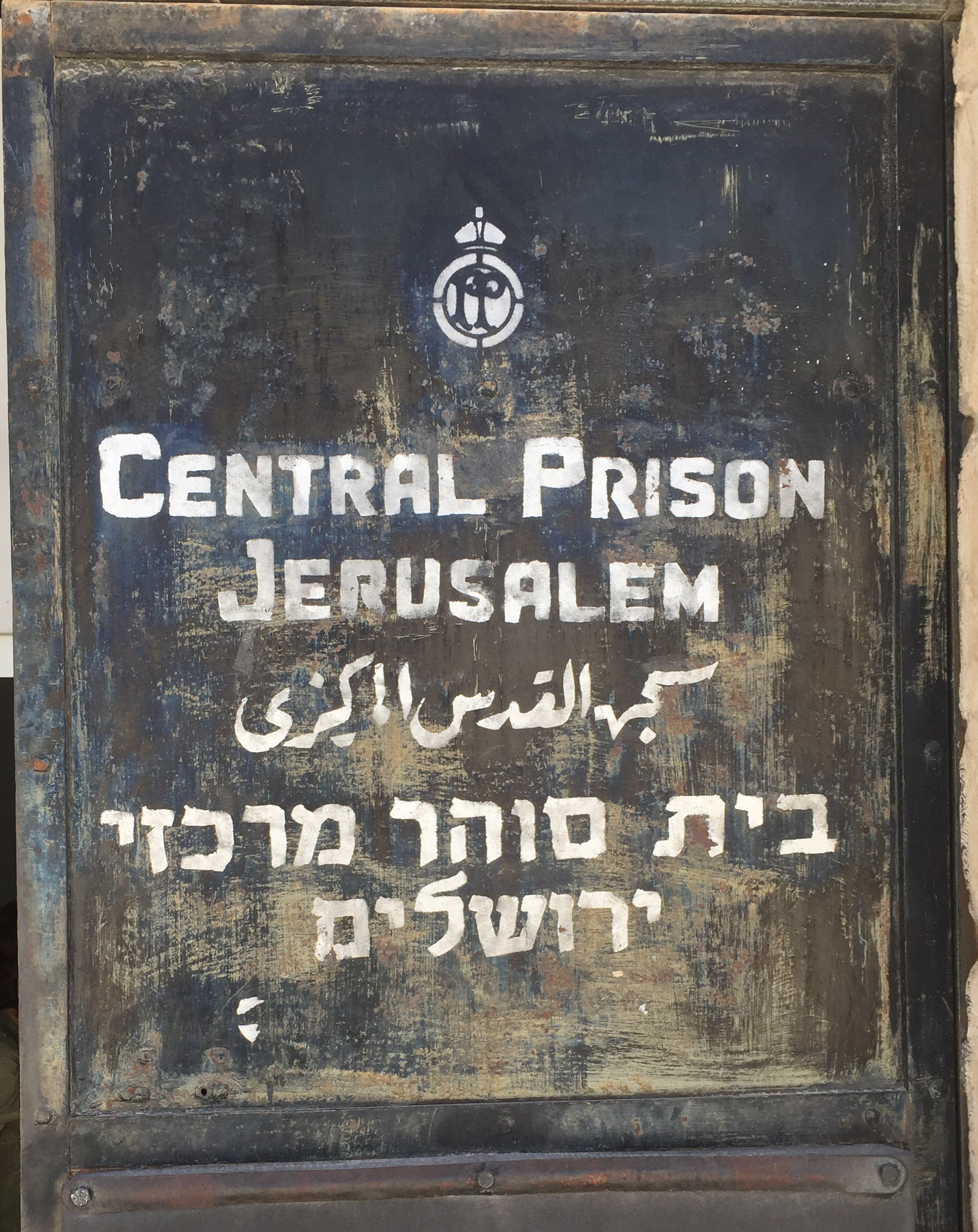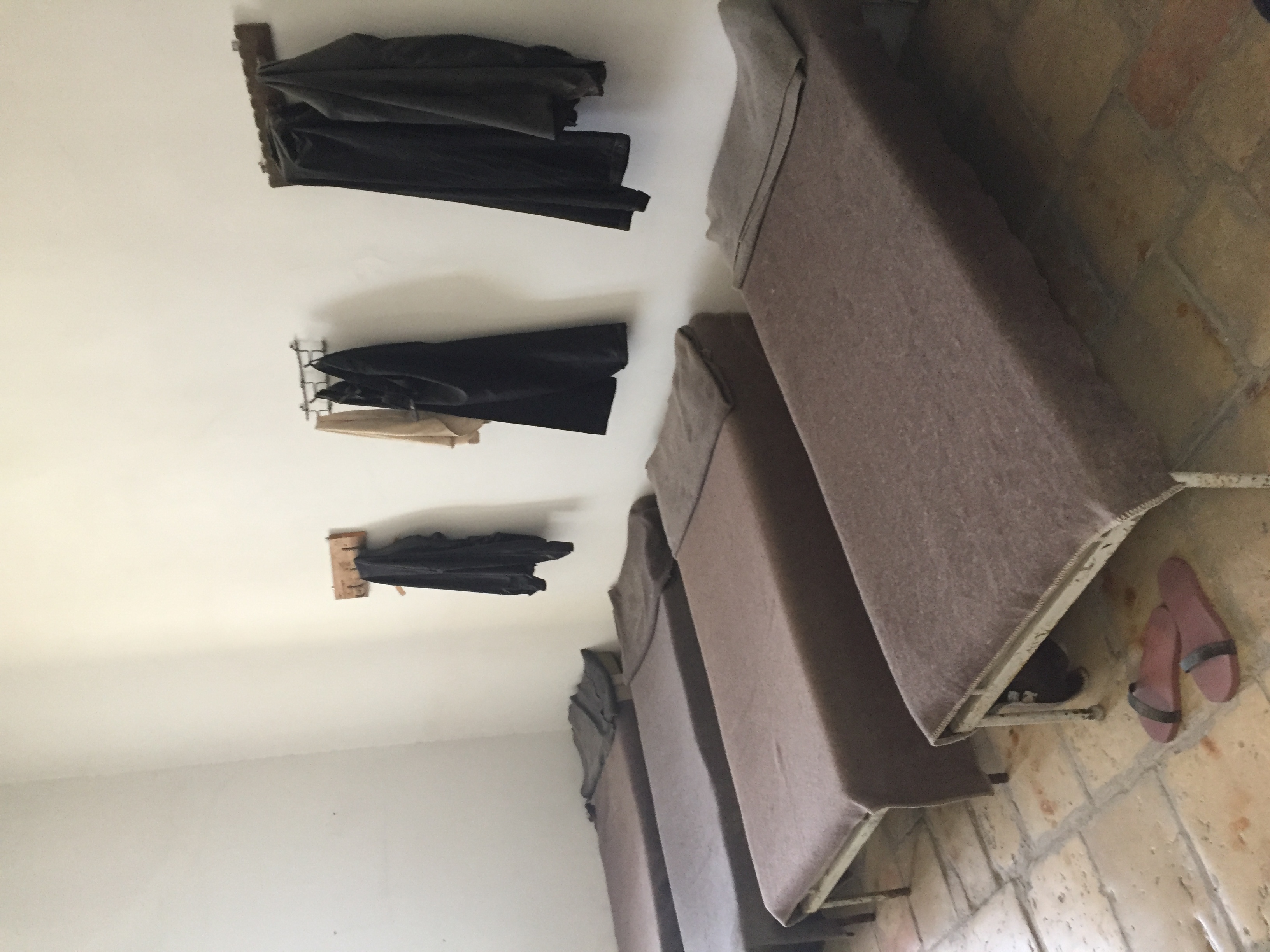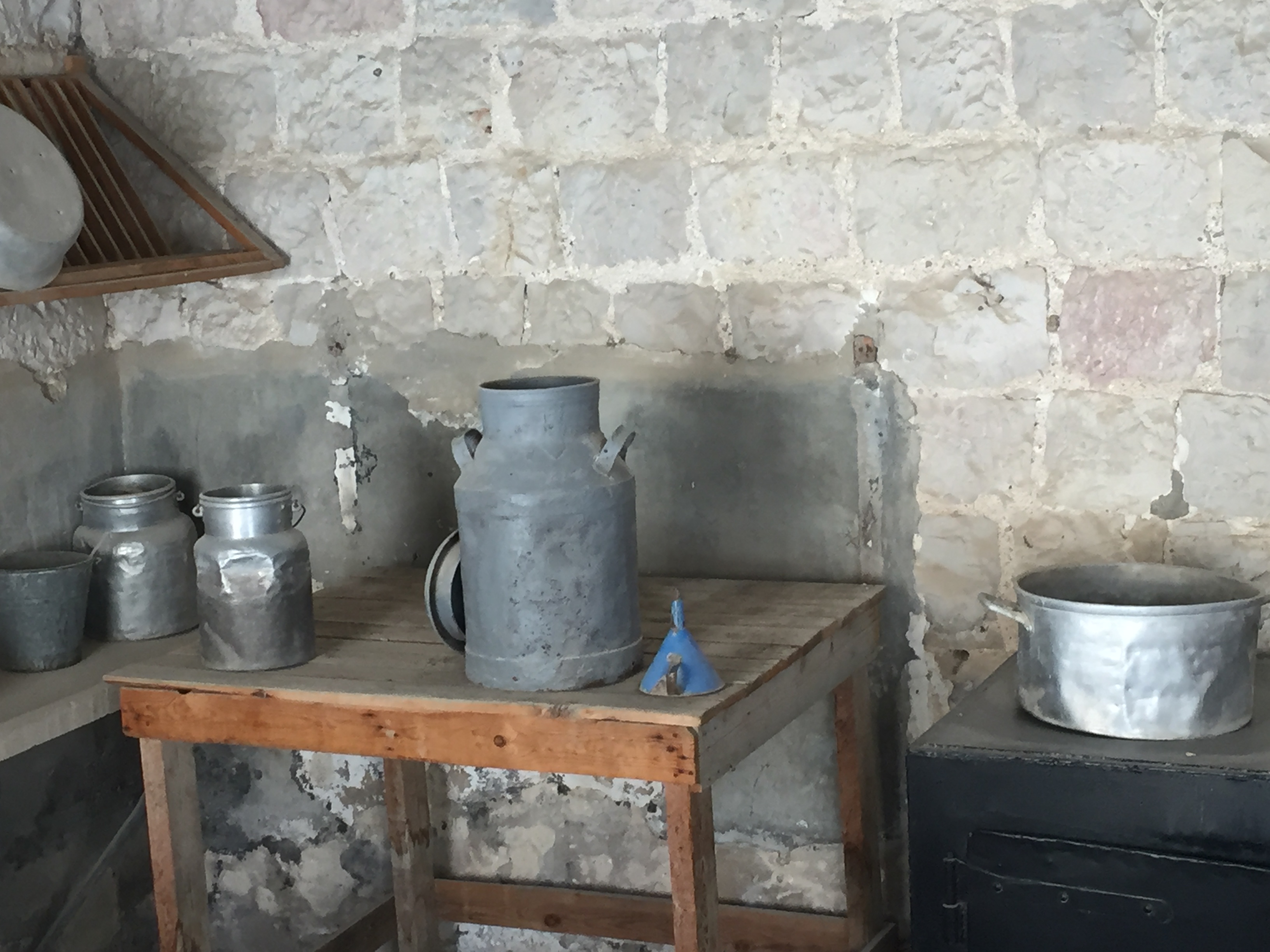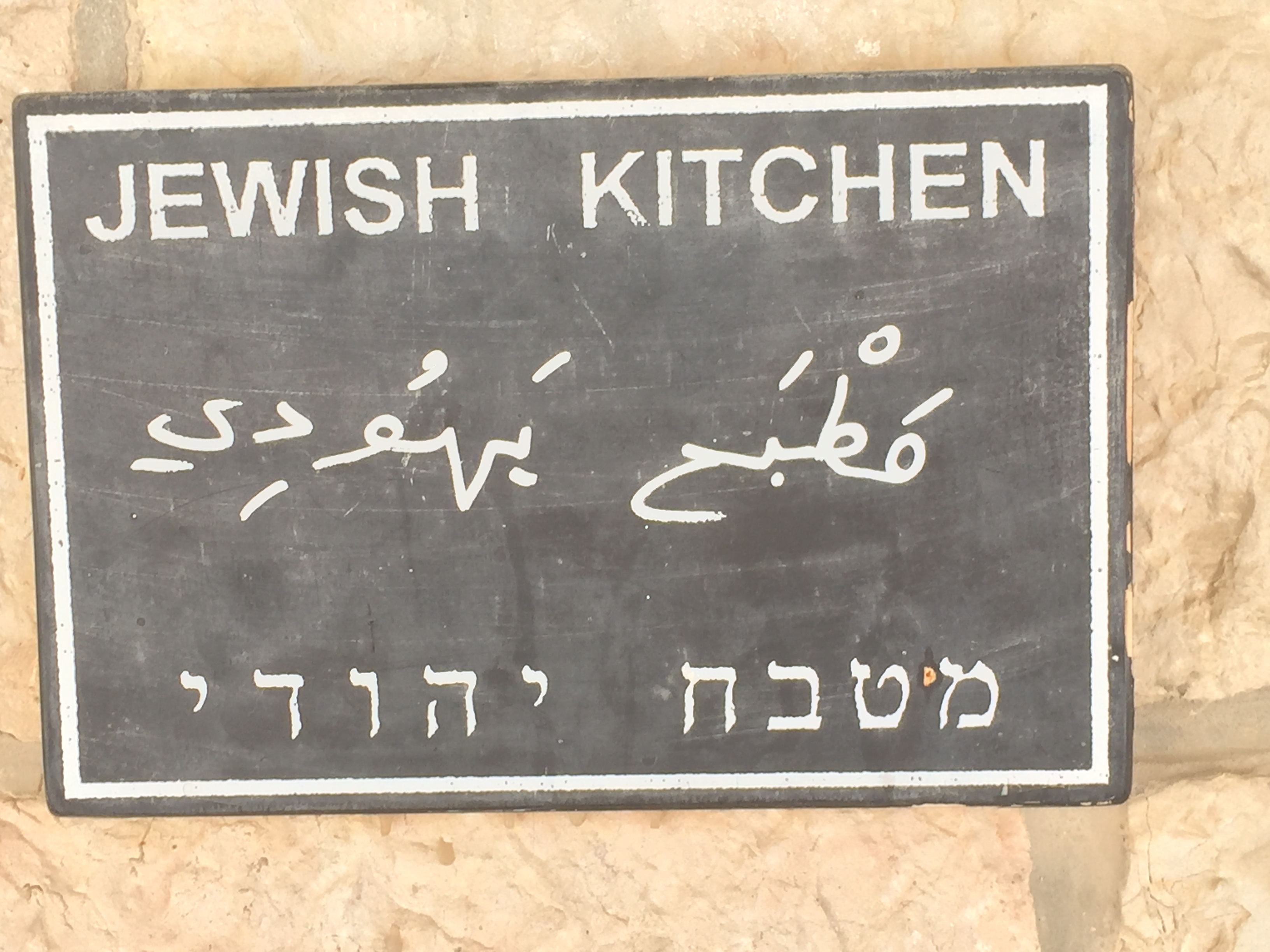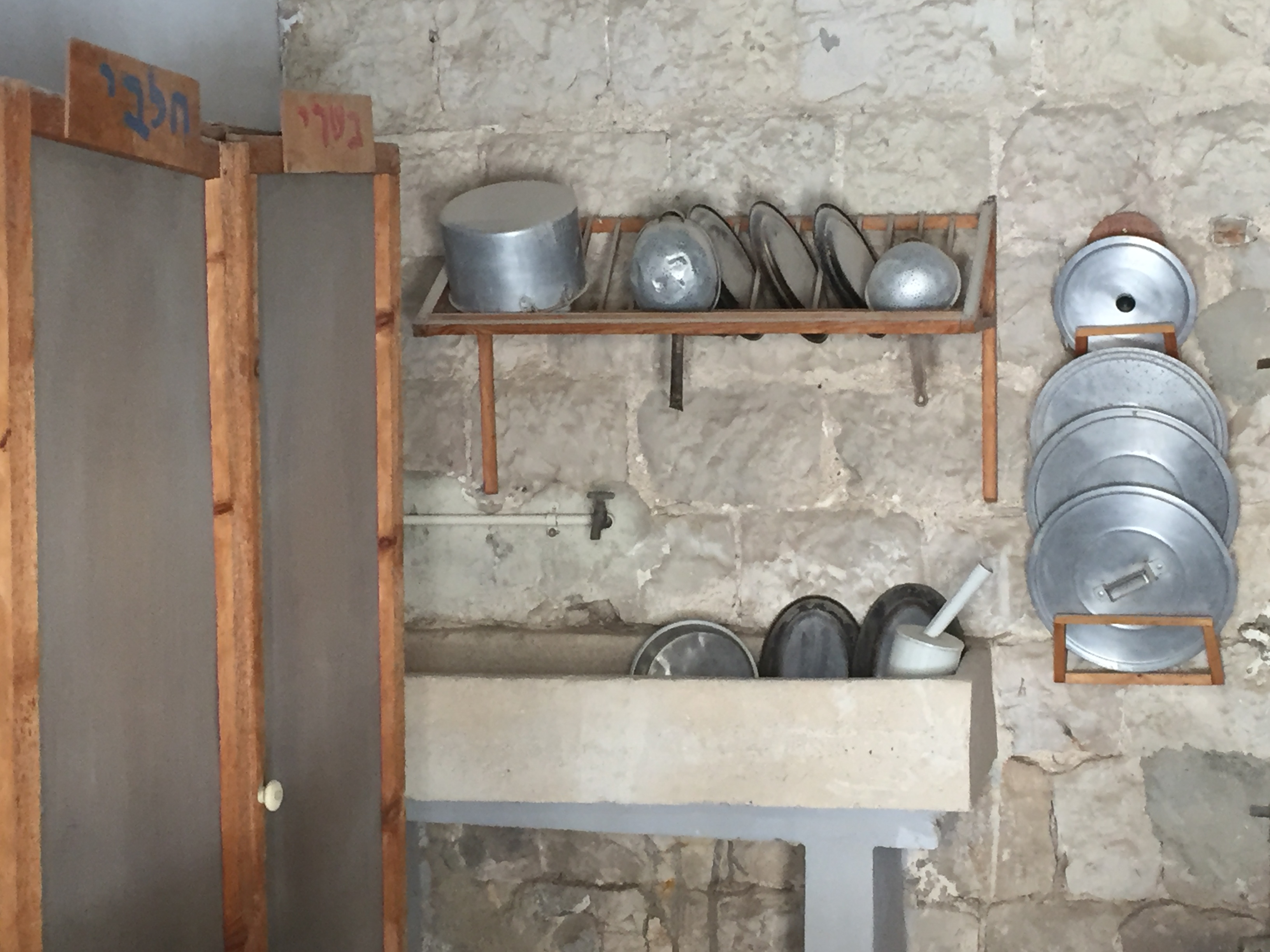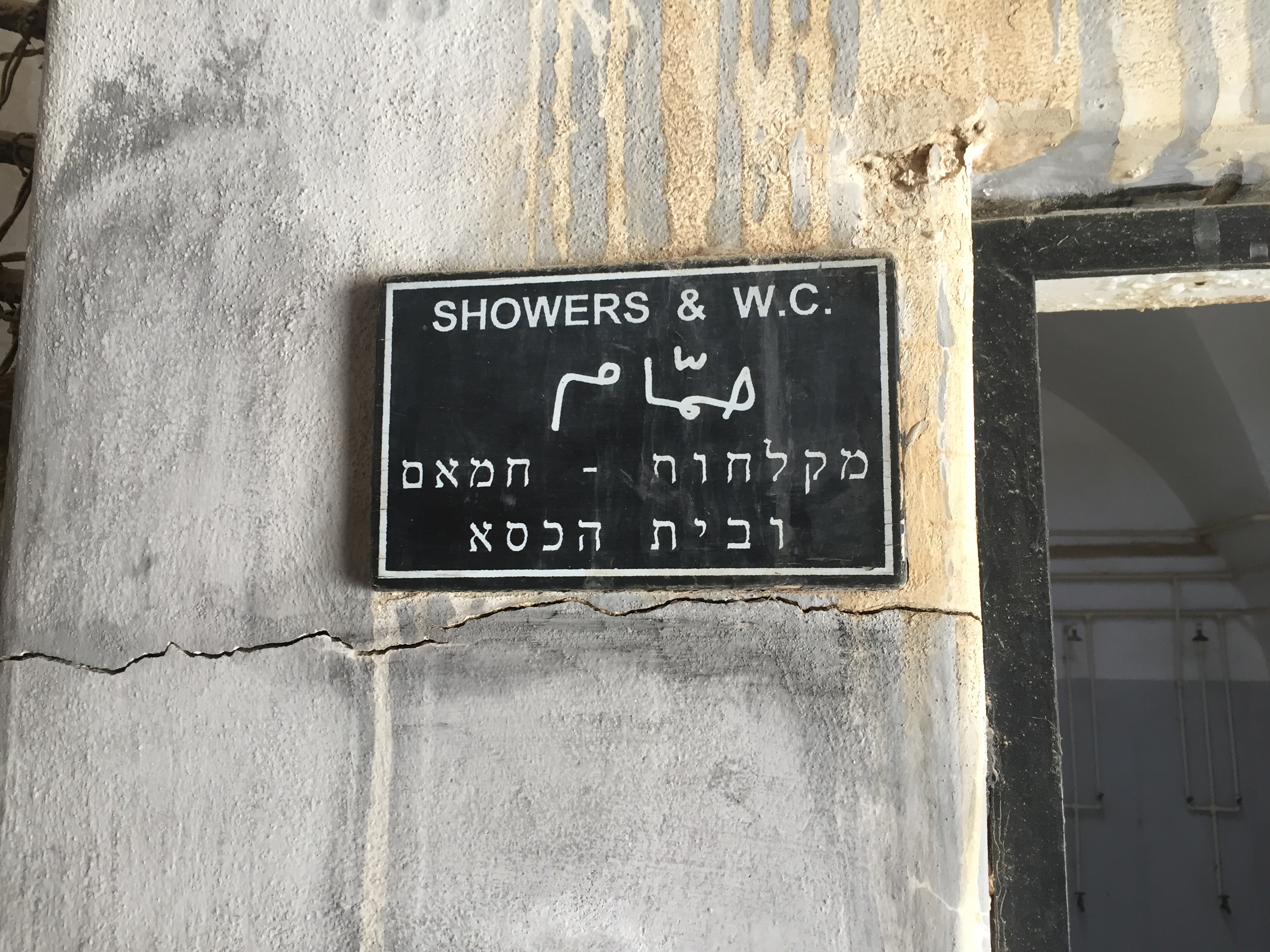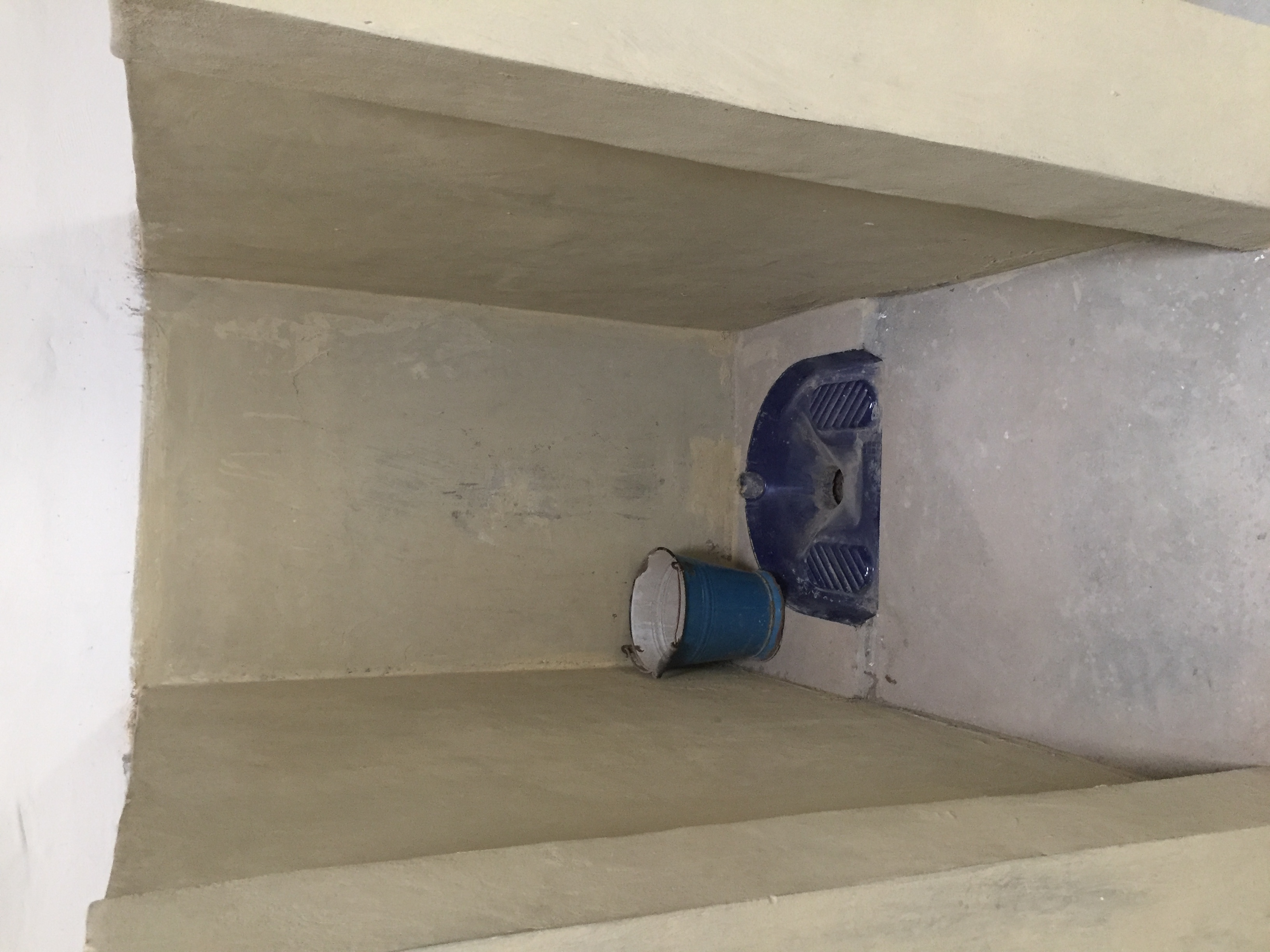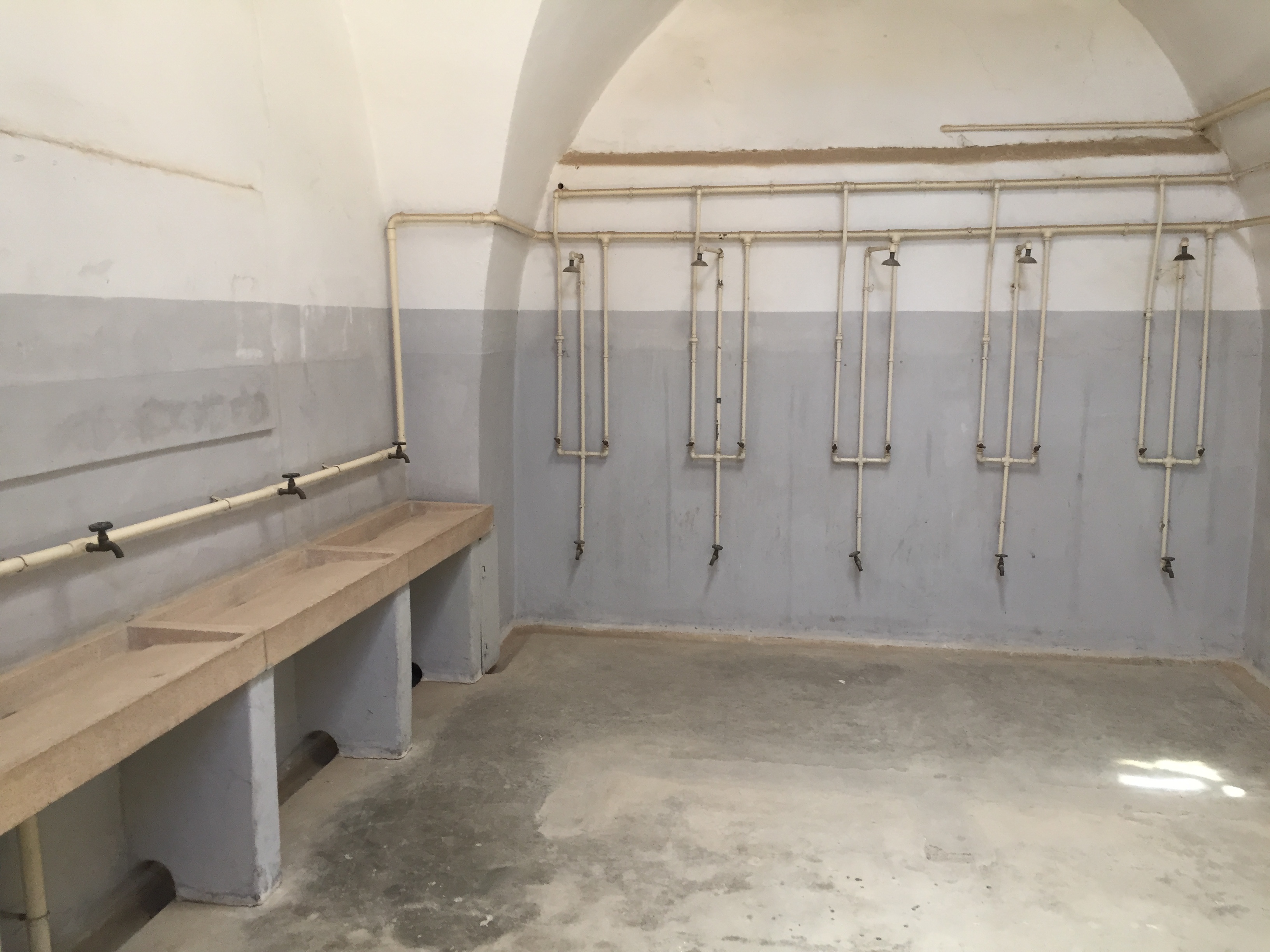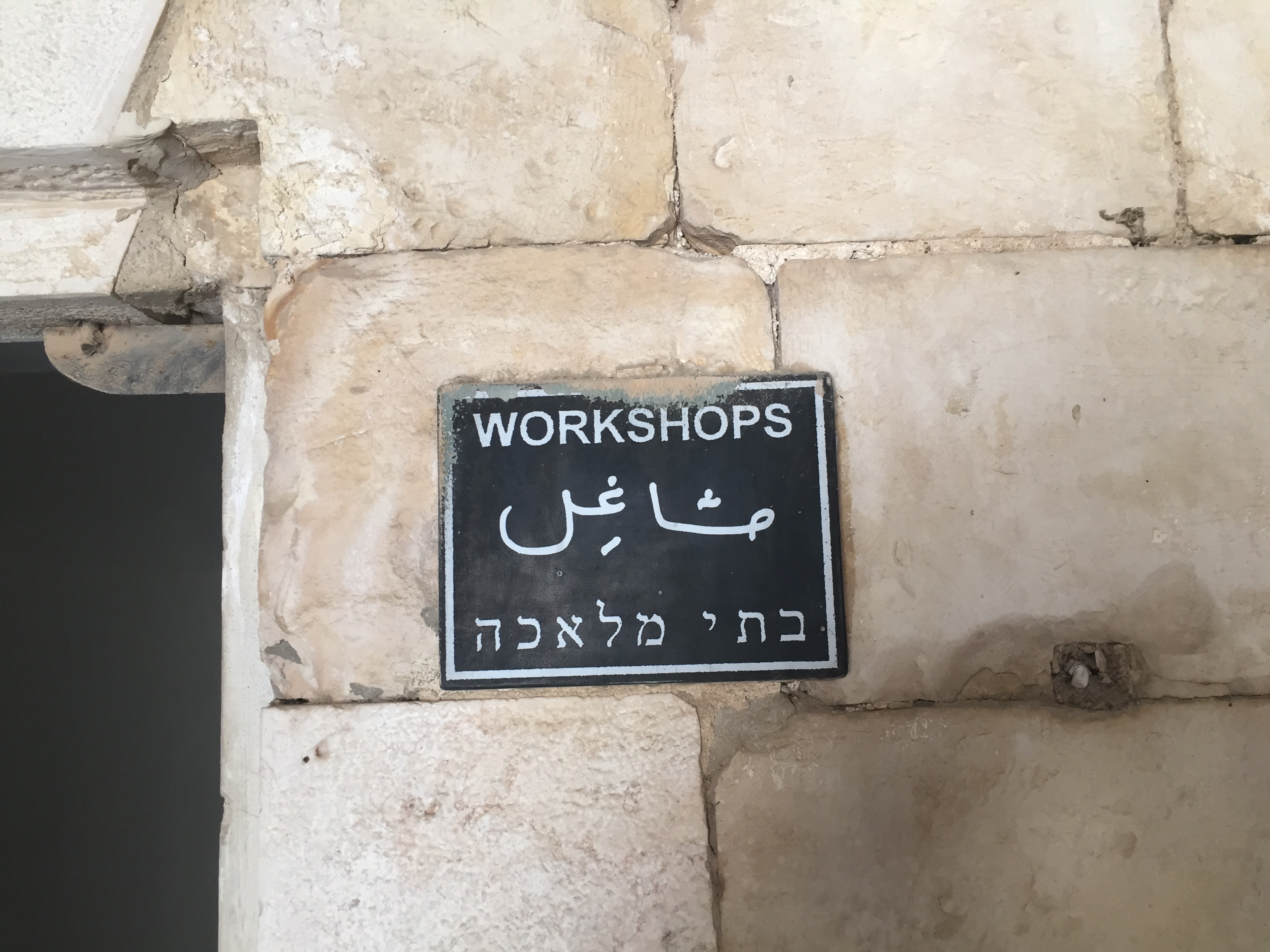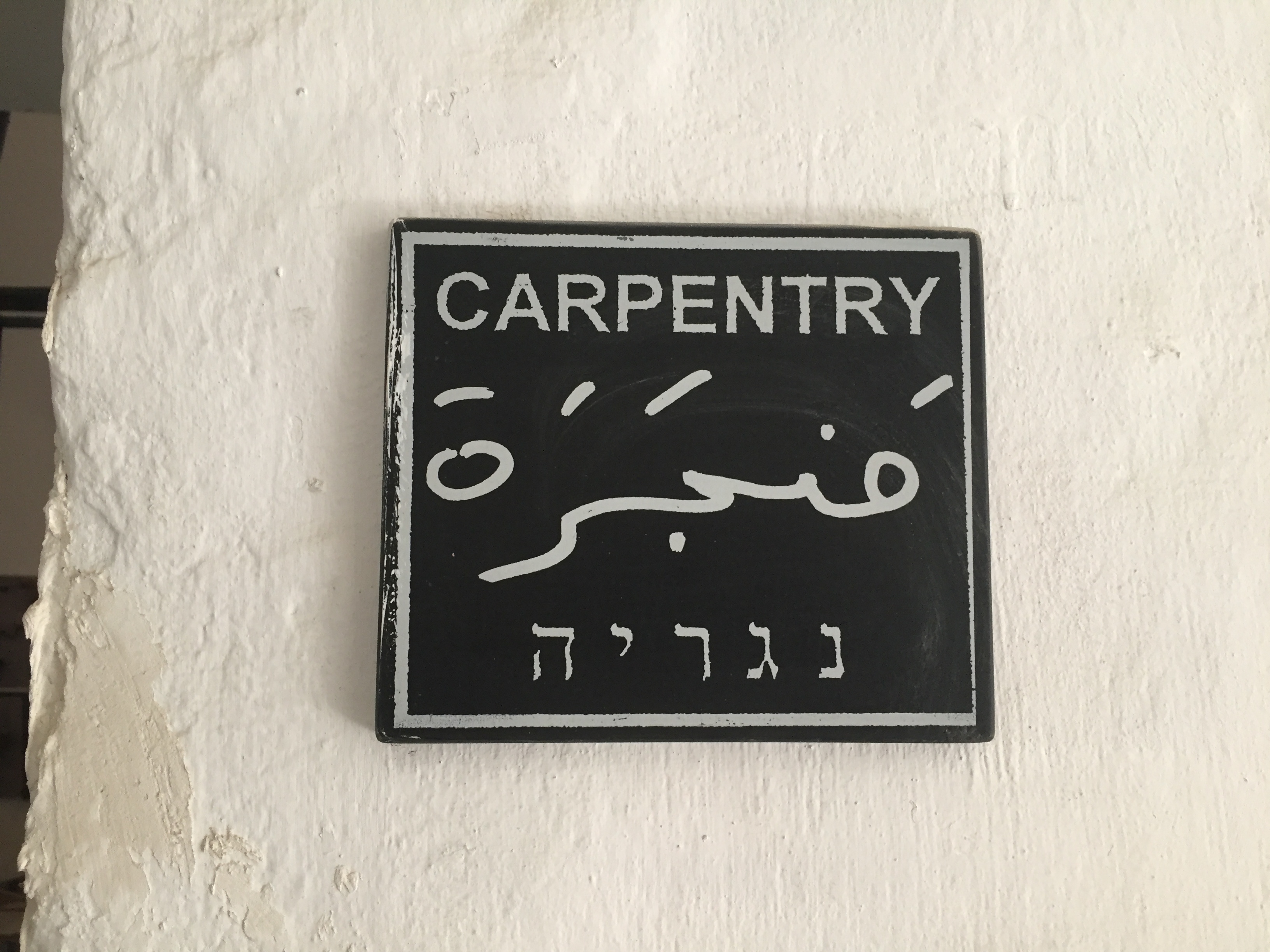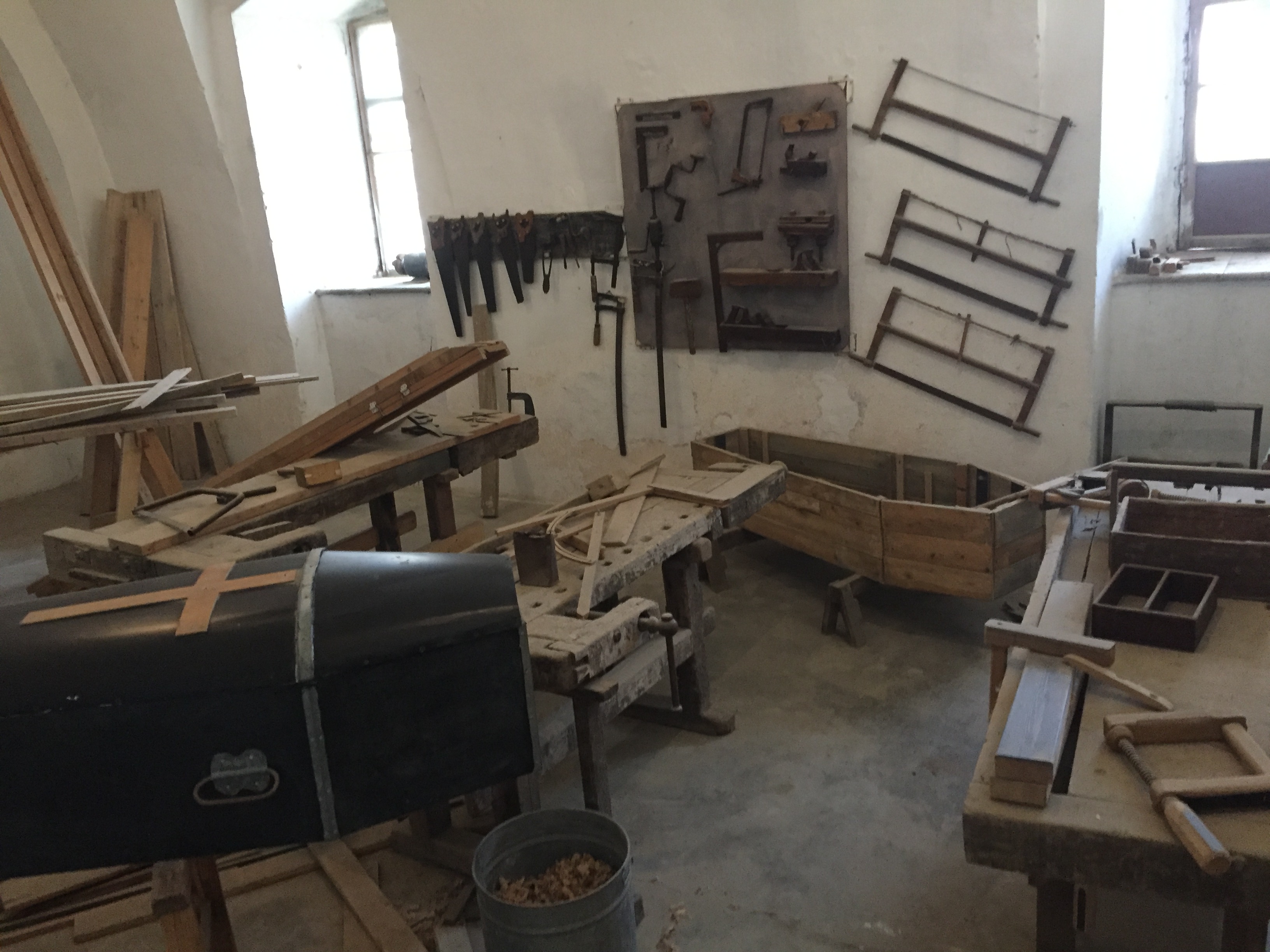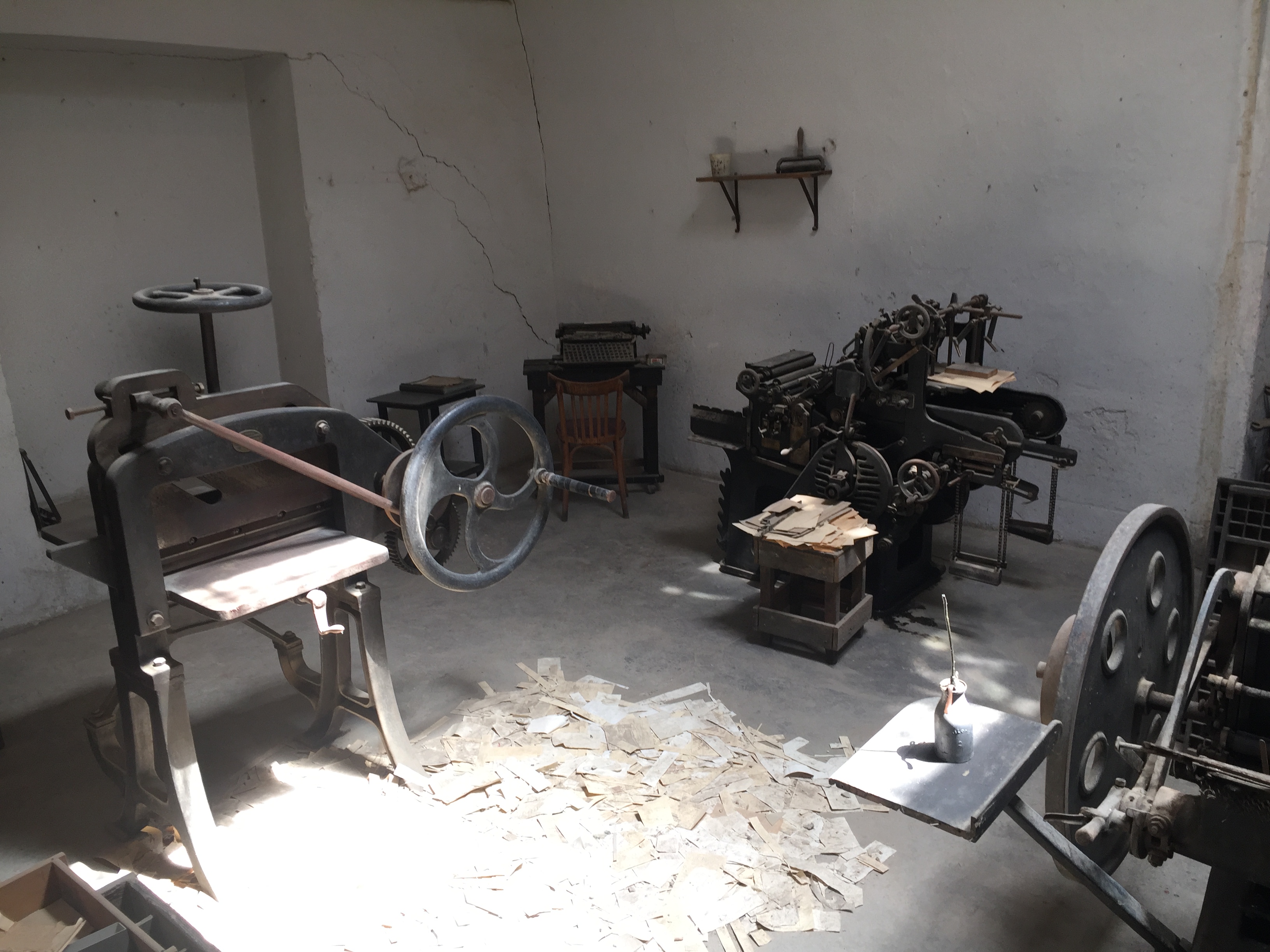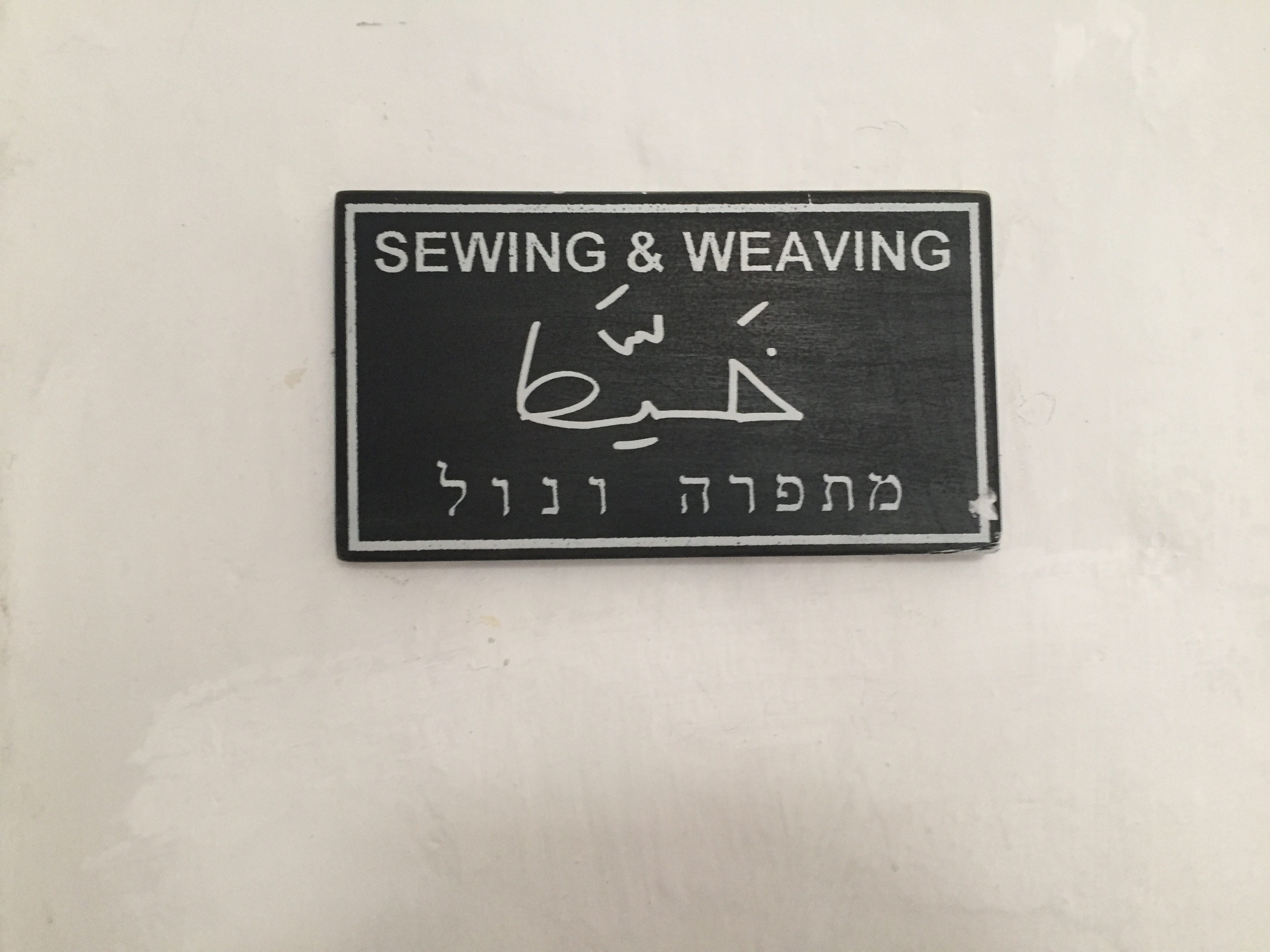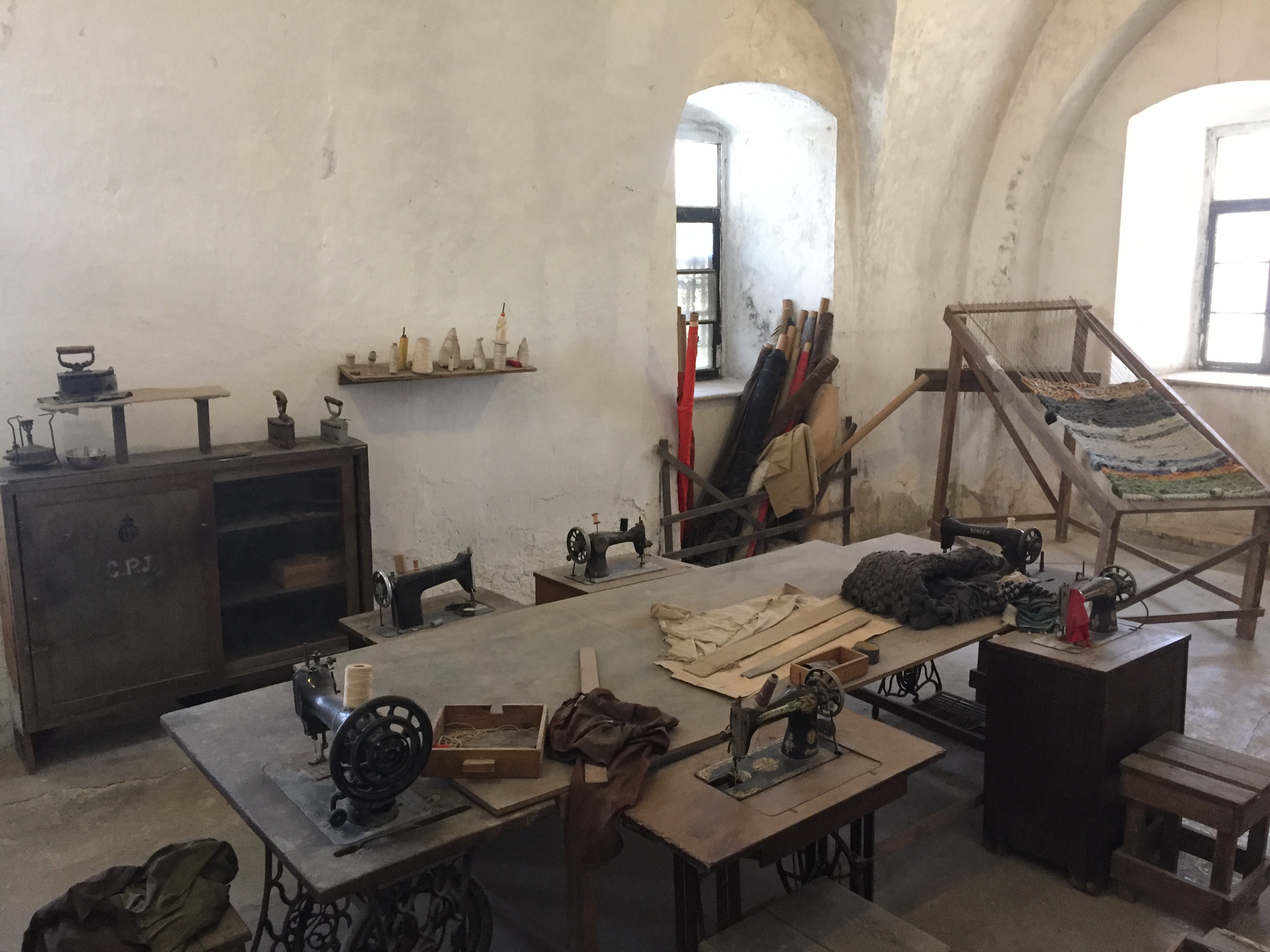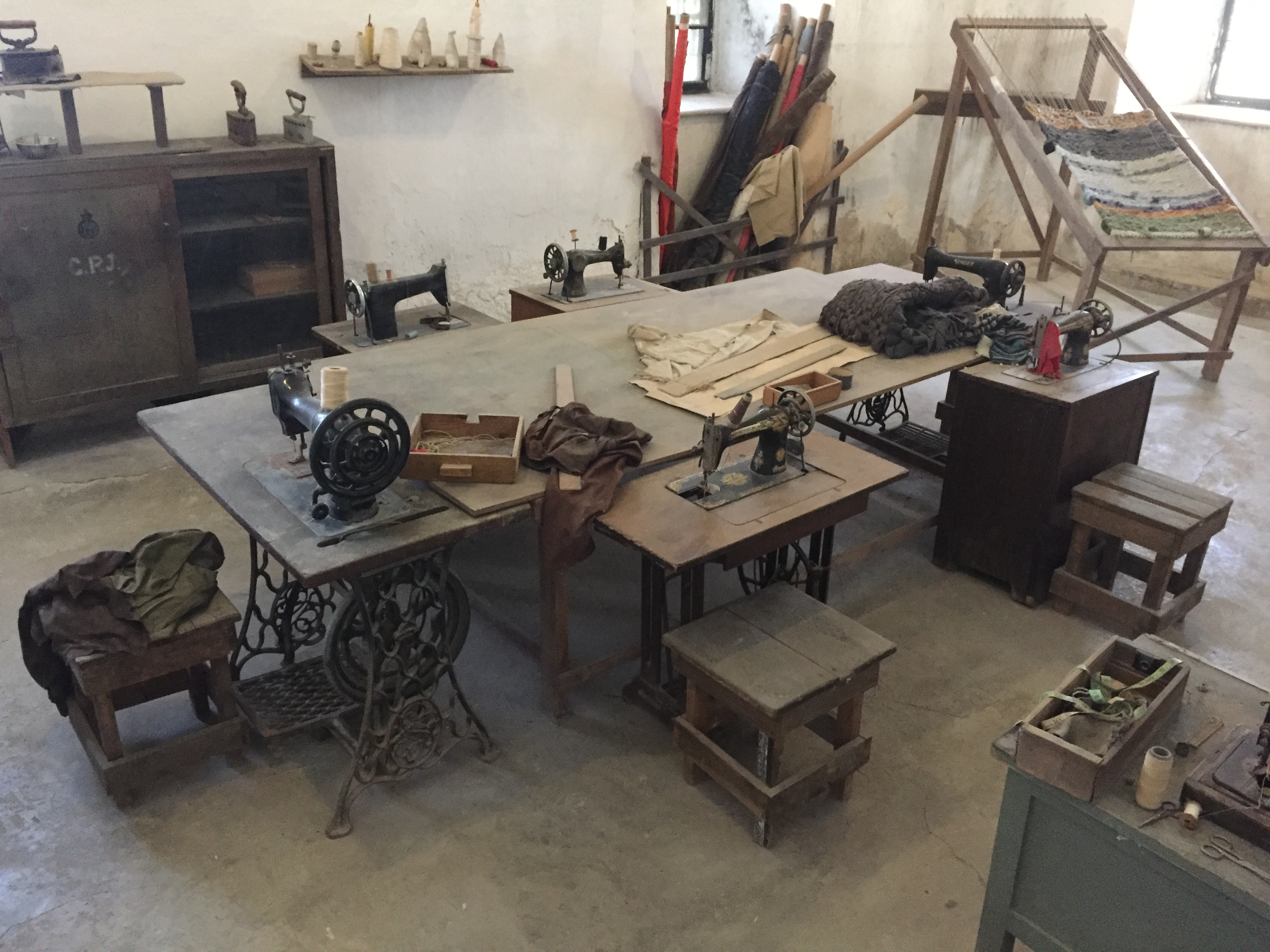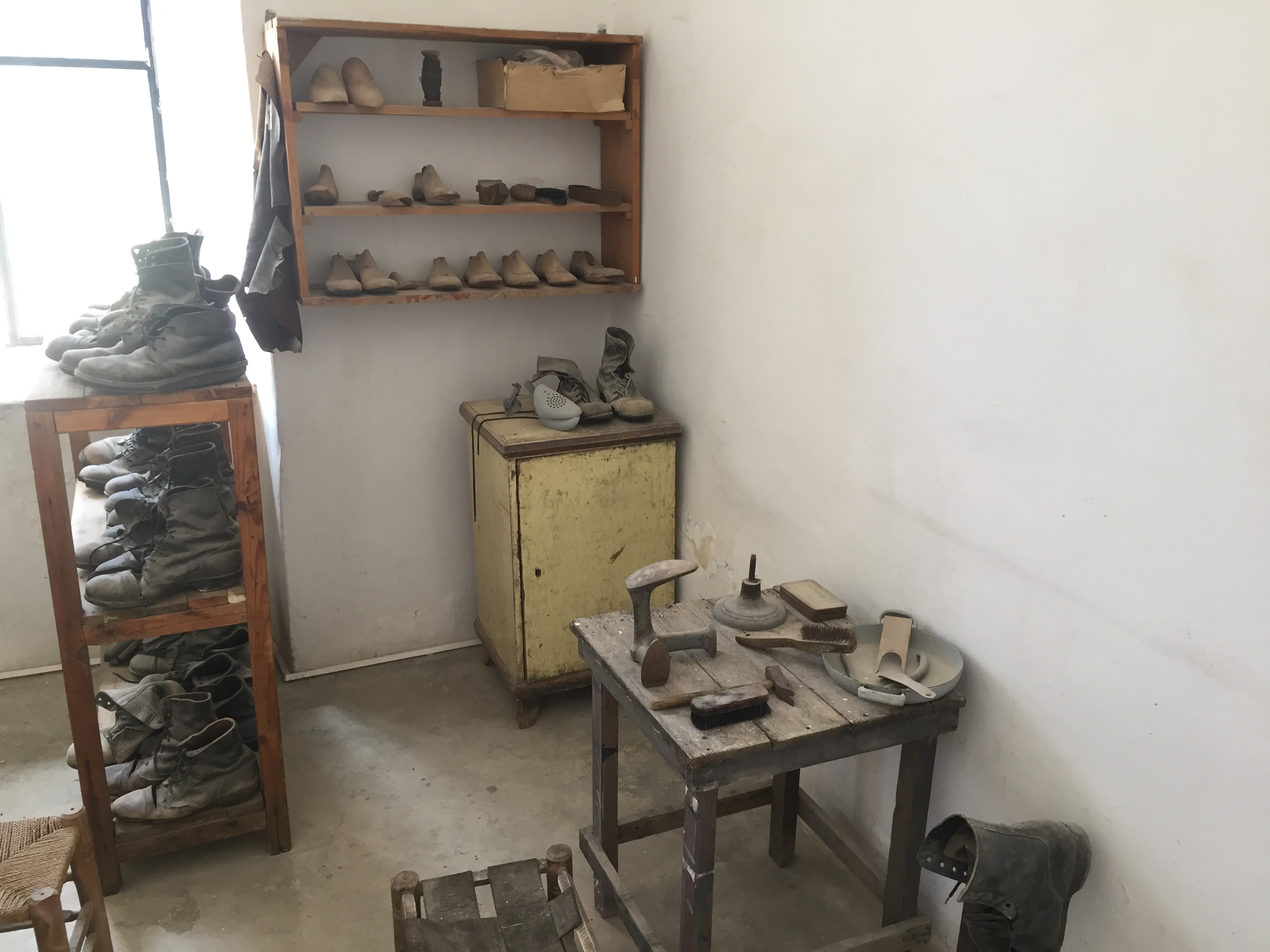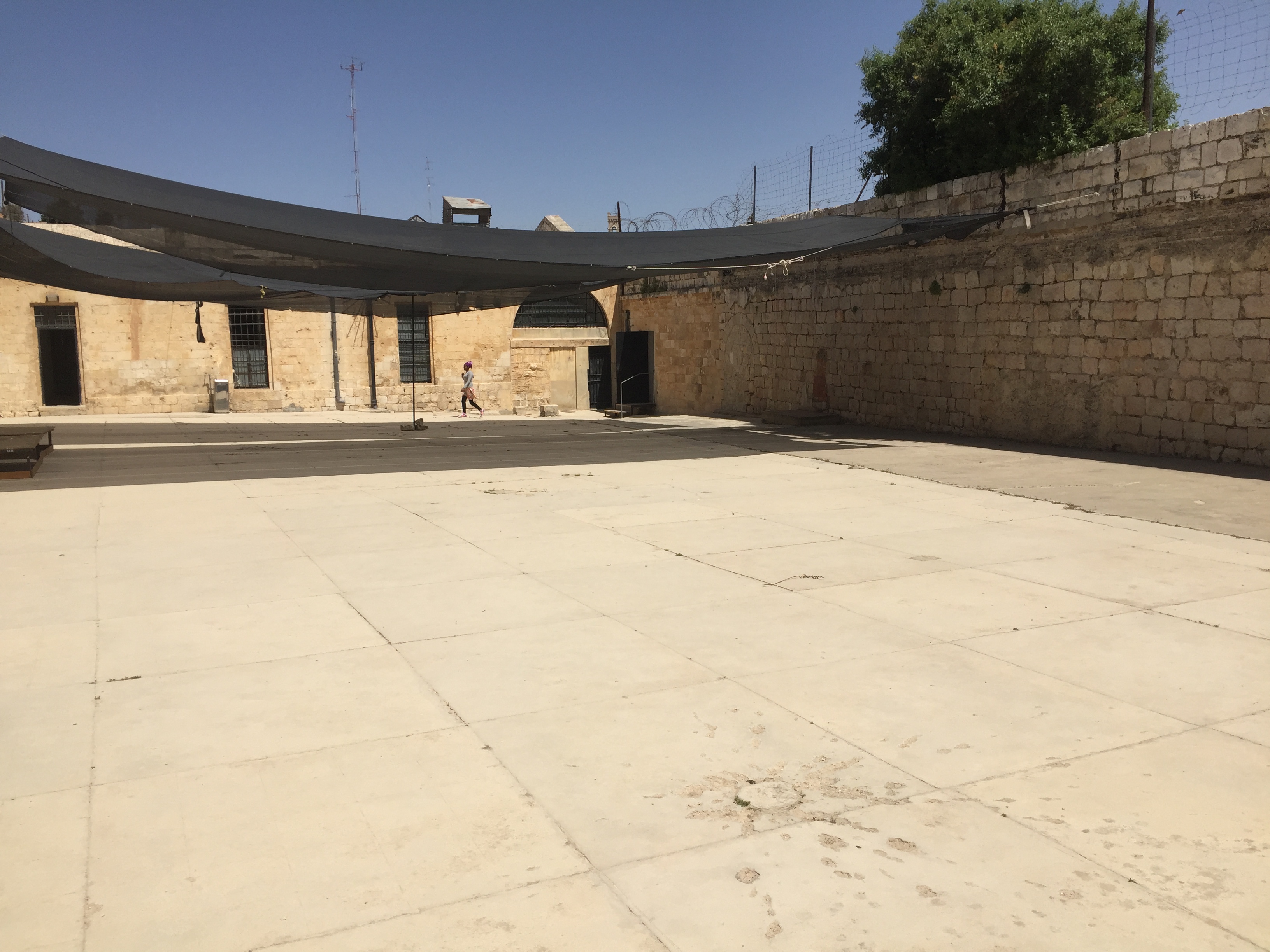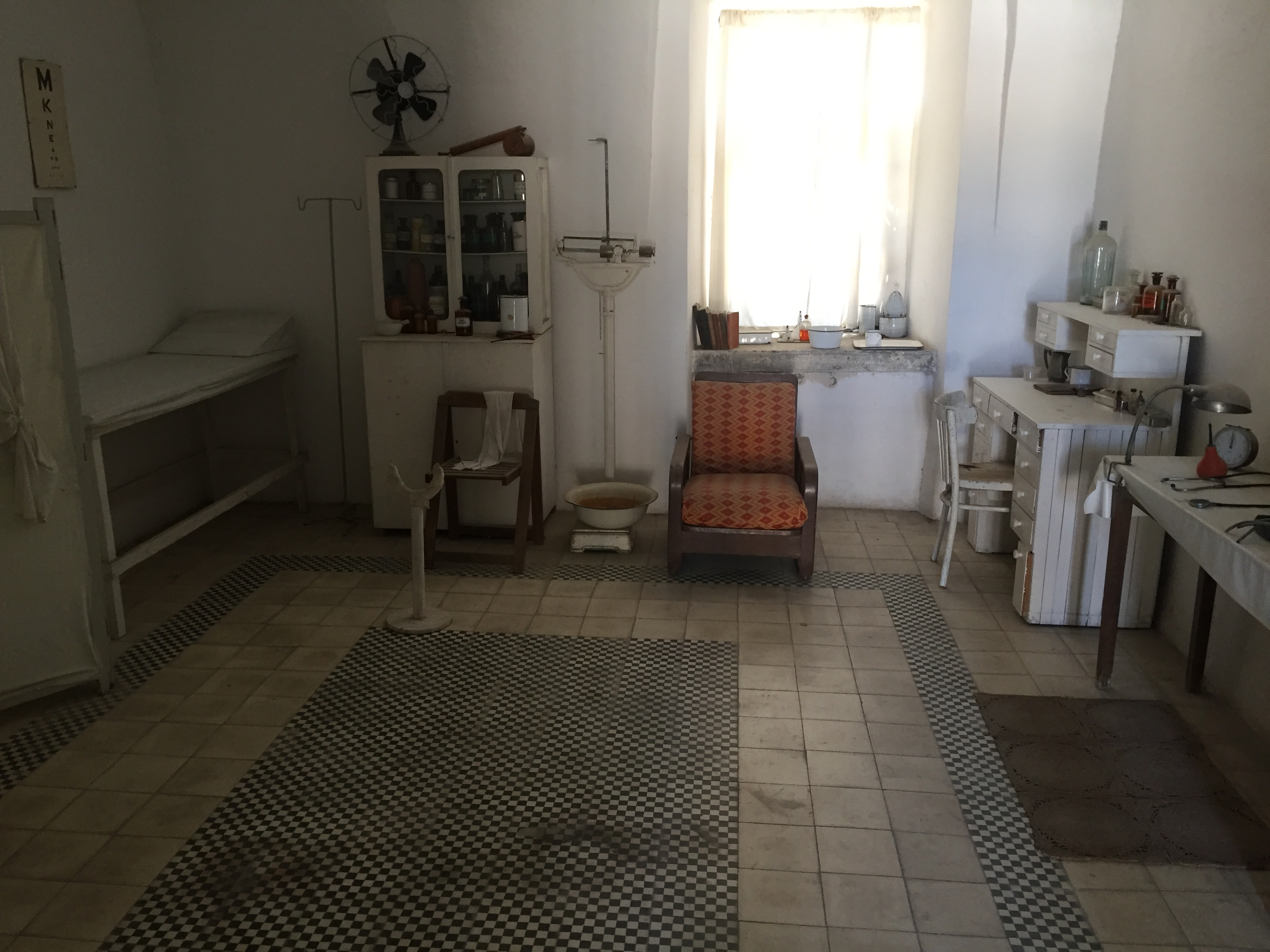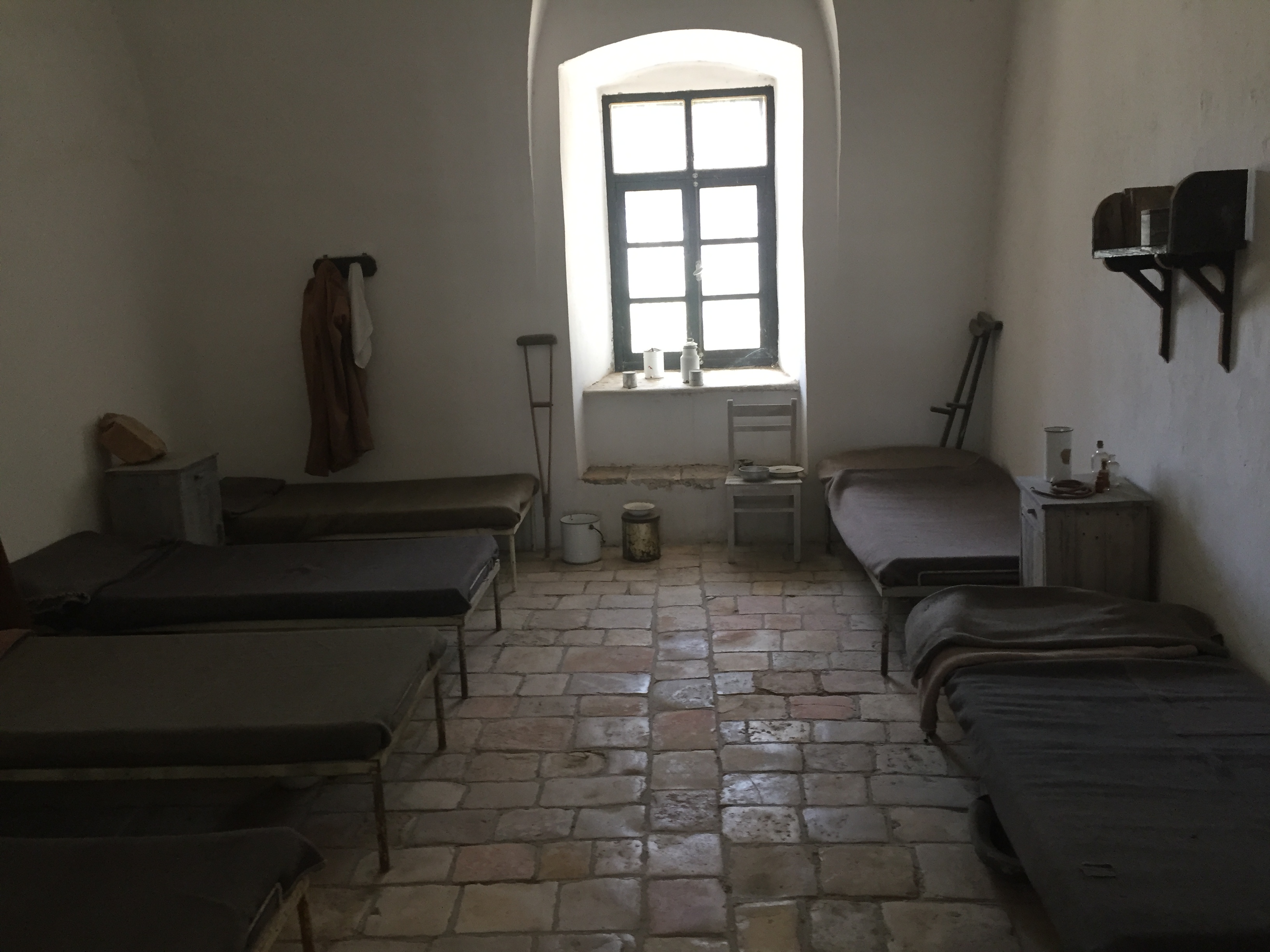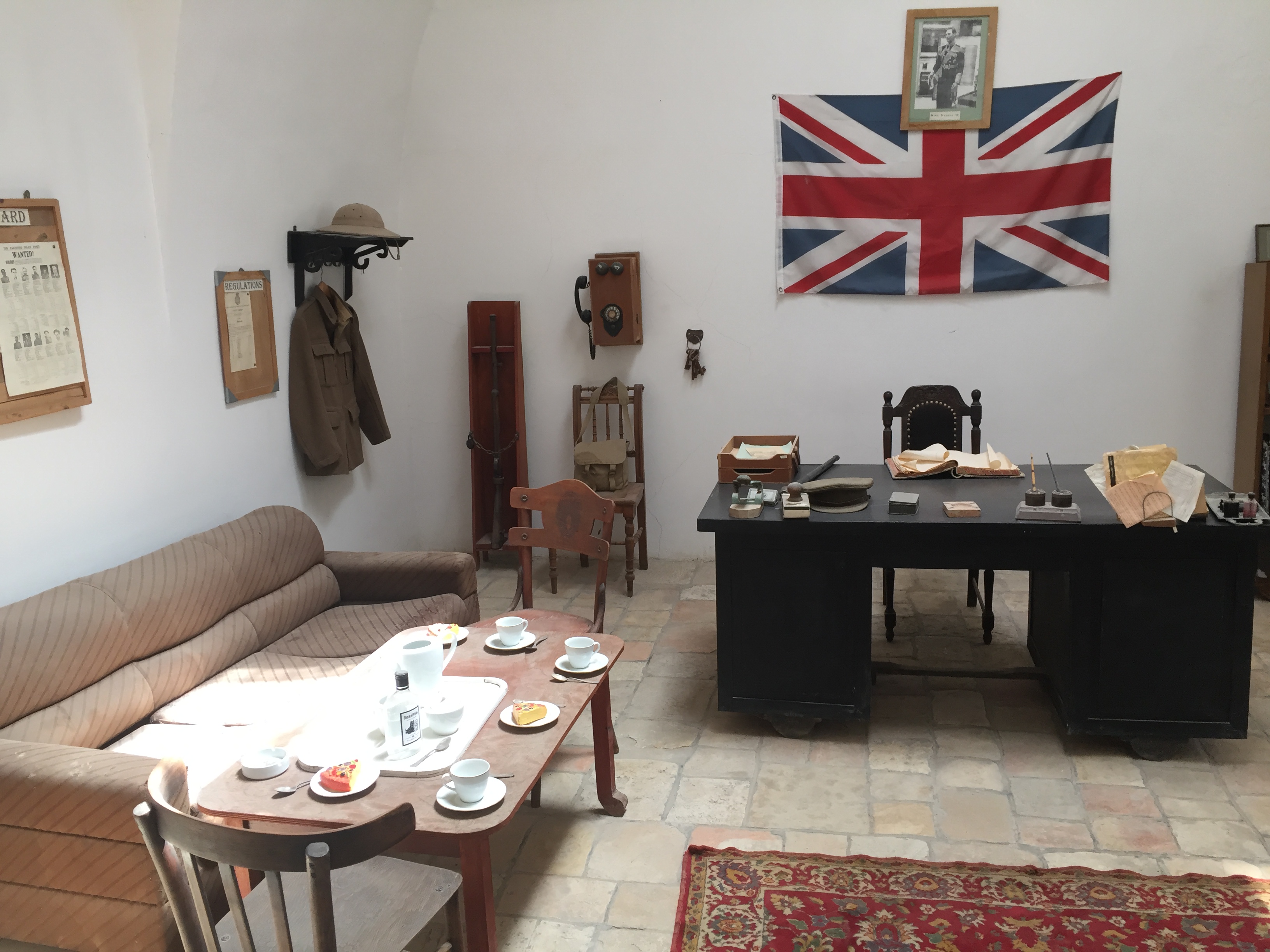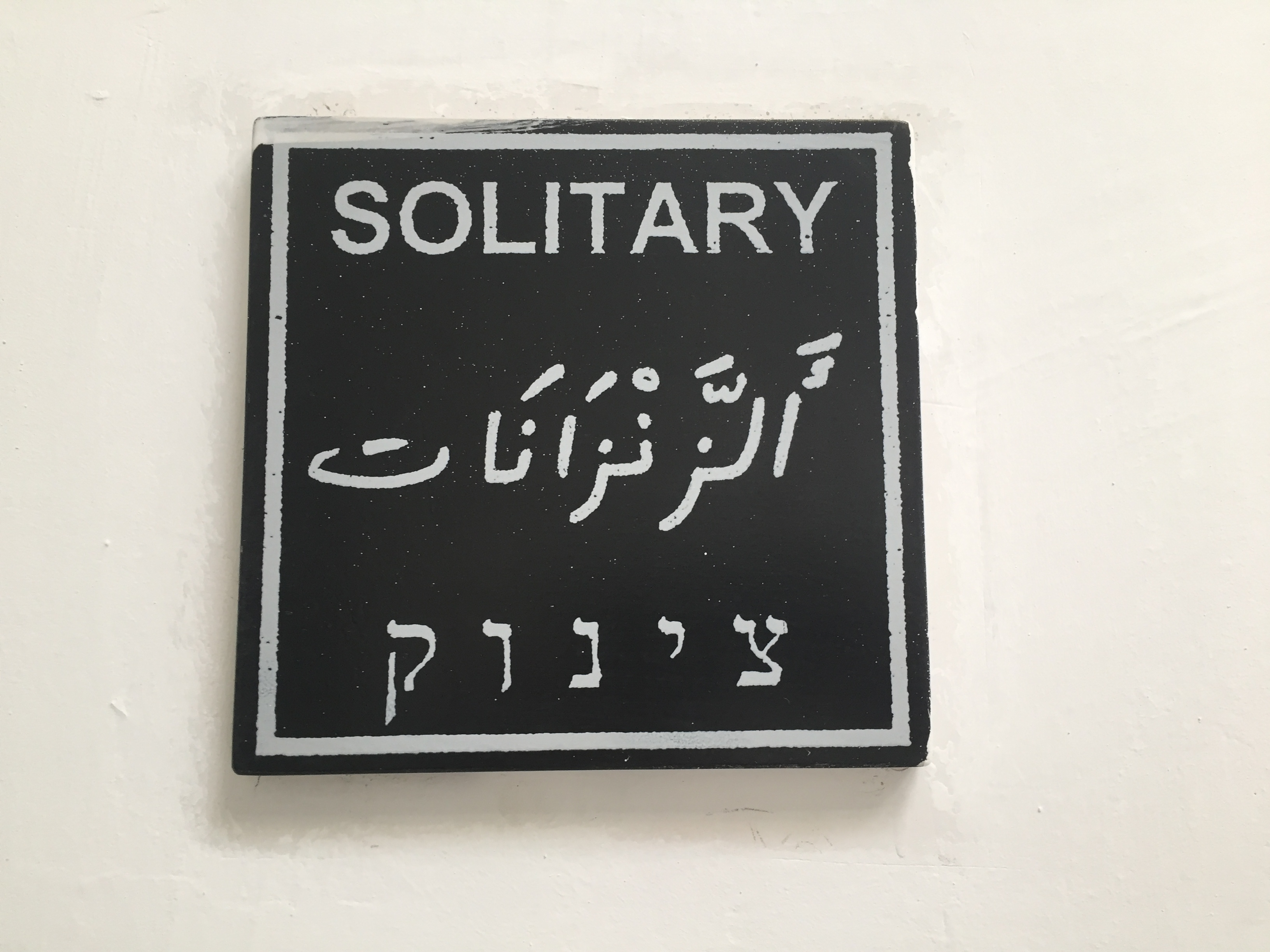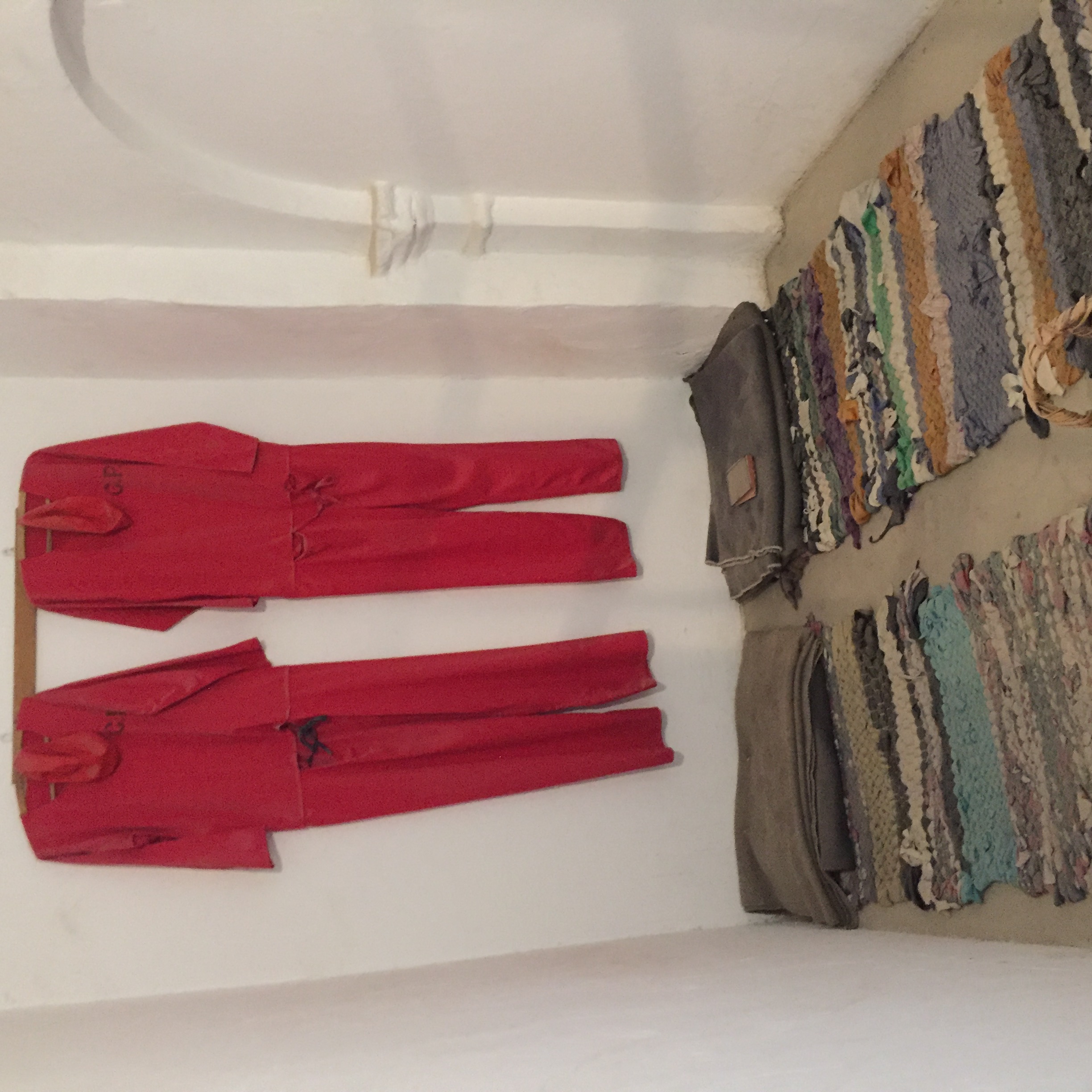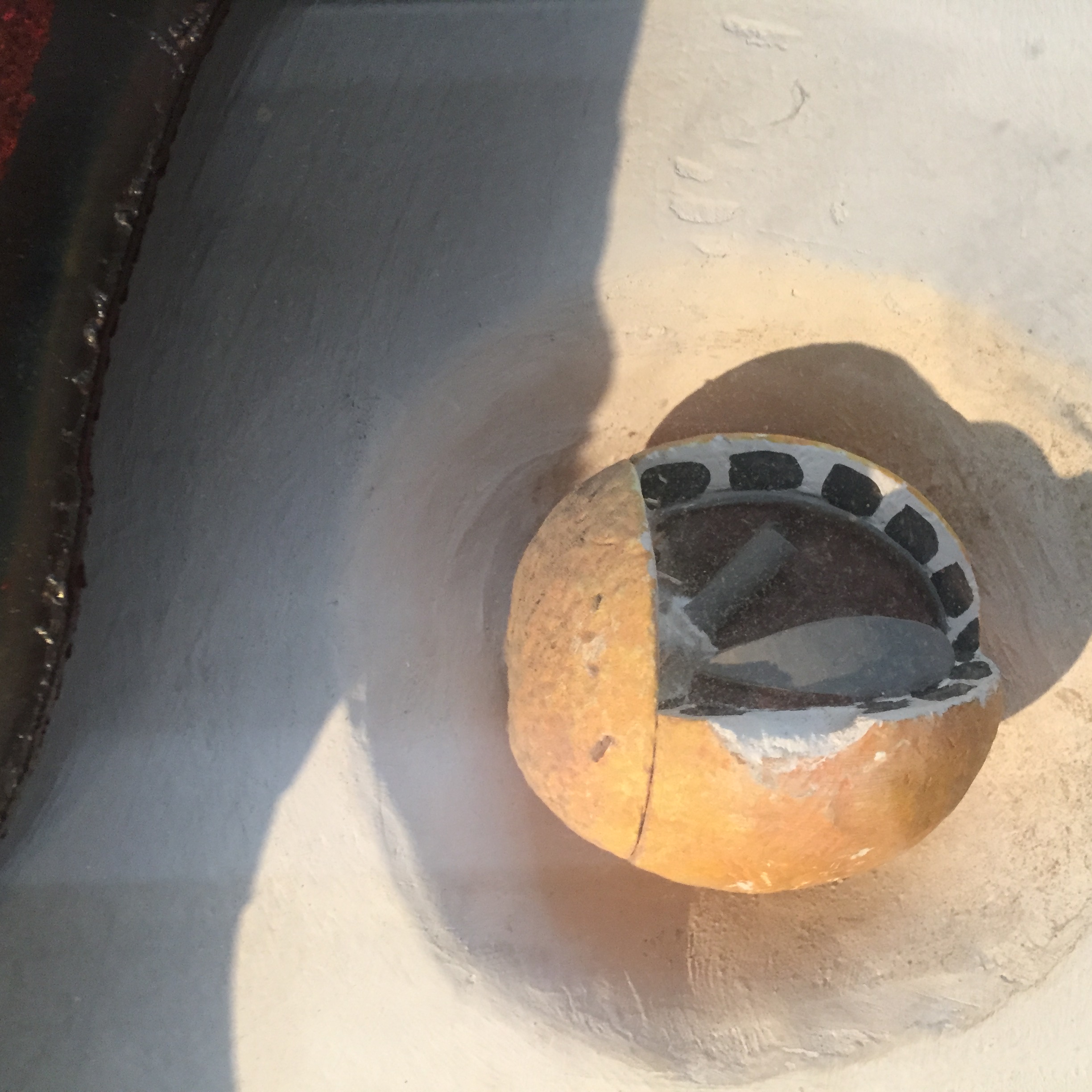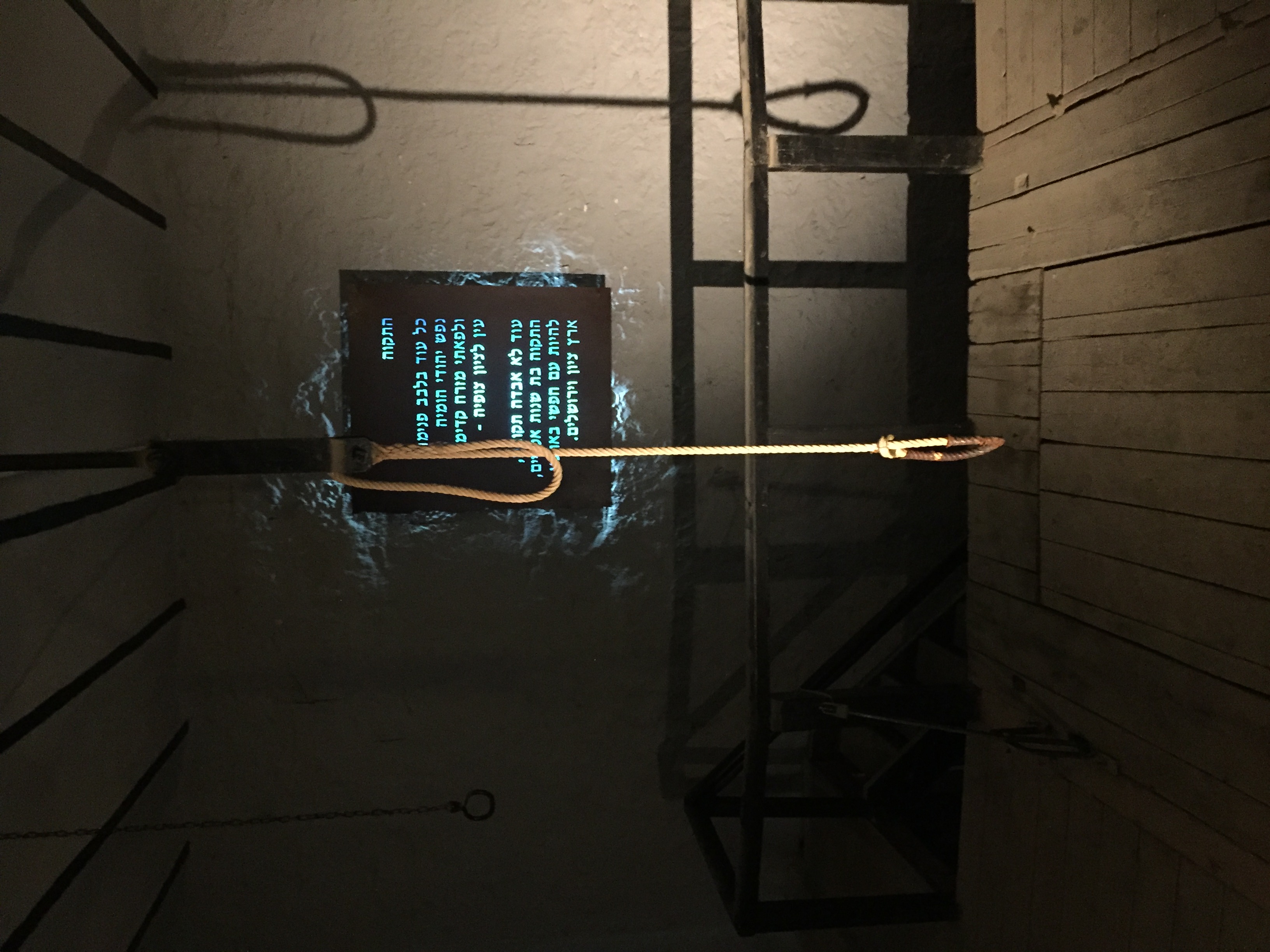Central Prison Jerusalem
During the 1920's, some 250 prisoners on average stayed in the prison. At the end of the British mandate in 1948, their number reached 550 and more. Among the criminal prisoners, the Jews were a few, but they were the majority of the political prisoners.
Apart from the convicted prisoners, there were also prisoners awaiting trial, and illegal immigrants. During the forties the prison was also occupied by administrative detainees, arrested under the emergency regulations. Among these walls sat hundreds of underground fighters from the Haganah, the Lehi and the Irgun that were imprisoned because of the struggle for the defense of the Jewish population, its liberty and the restoration of the Jewish National Home in Eretz Israel.
The prison was evacuated on the eve of the proclamation of the State of Israel. The building changed its purpose and was used as a warehouse for the Jewish Agency, the Youth Aliyah,
the Zionist Archive and other purposes. The Association of the Prisoners of Acco and Jerusalem erected here the Hall of Bravery.
In November 1991, the house was transferred to the Ministry of Defense, which restored it and turned it into the Museum of the Underground Prisoners.
Prison Entrance.
Prison Hall.
Example of a prison cell where prisoners were confined from 4 p.m. to 8 a.m.
Burshes(rug mats) were woven in the prison's workshops from old clothing and served as mattresses. Daily routine began with early wake-up, followed by the roll call, cell cleaning and morning stroll in the yard. The toilet was a pail and the weakest prisoner had to sleep closest to it.
The bed in the corner belonged to the
mukhtar,a prisoner appointed by the prison authorities to be in charge of discipline, daily routine and the cleanliness of the cell. In exchange, he received benefits such as a bed and better food rations. Prisoners from the underground demanded to be calledpolitical prisonersand were separated based on their organizational affiliation. They chose their own Mukhtars.Cell for
special treatmentprisoners. These included prisoners awaiting trial, foreign citizens, white collar criminals and others awarded special treatment.Special treatment prisoners were allowed to wear their own clothes, receive rations from outside the prison and did not have to work. They occupied themselves with board games, handicrafts and reading. Some well-educated prisoners organized study classes for their friends.
Room reserved for worship on Sabbath and holidays. Once everyday articles were cleared out, prisoners would assemble to pray with Rabbi Aryeh Levin. For more than 20 years, the
Prisoners Fathercame every Sabbath to pray, offer words of comfort, and relay messages from outside the prison.Utility yard with kitchen, toilets, showers, and fumigation room.
Kitchen
Kitchen
Kitchen
Kosher kitchen
Kosher kitchen
Kosher kitchen
Laundry
Laundry
Fumigation room
Fumigation
Showers & W.C
Water closet
Shower
Prisoners spent 5-6 hours of work under the supervision of an outside professional. Prisoners often
borrowedtools for other purposes.Carpentry workshop
Carpentry workshop
Press workshop
The printing press issued the police gazette, and documents for the British authorities. Prisoners passed information from classified documents to their friends.
The printing press was sometimes secretly used to forge documents for the underground.
Sewing workshop
The sewing workshop made prison fatigues and wove the burshes (rag mats) from old clothing used for mattresses in the cells.
Sewing workshop
The shoemaking workshop repaired and produced shoes and sandals for the prisoners.
Prison yard
Prison yard
Prison yard
The southern wing was used as the sick room and prison clinic. Wounded prisoners who had been jailed after run-ins with the political prisoners, or those suffering from infirmities due to the severe prison conditions, received treatment here. During a brawl between Jewish and Arab prisoners on January 28, 1947, a Jewish male nurse, Avraham Shvili, was murdered.
One prisoner said the clinic had two medications: red syrup and green syrup. All ailments from the bellybutton down were treated with the red syrup, while anything above that was treated with the green syrup. The real medications are sold on the black market, he said.
George Charlton was prison warden from 1944-1947.
The prison warden's office was separated from the prison by a wall that blocked the corridor. The photograph above the desk features King George VI.
Although the prison wardens were all British officers, there were Arab policemen and many Jews among the prison guards.
Solitary confinement cells
Entrance to solitary confinement cells
In these narrow cells, which the prisoners called
hell,the prisoners who violated the rules, such as participating in a fight or being rude to a prison guard were punished.
Being imprisoned in the solitary confinement was considered an extremely harsh punishment; the warden who was punishing could decide to confine the prisoner for a few hours up to a couple of weeks. The solitary confinement cells were also used to house prisoners sentenced to death in the event that the death rows were full.
Cell where death row inmates Moshe Barazani and Meir Feinetein were held
Model of the orange containing a grenade smuggled into the cell of Barazani and Fineshtein that they used to commit suicide.
Prison gallows
Prison gallows
Memorial in the museum to prisoners executed by the British.
Source: Underground Prisoners Museum. Photos by Dr. Mitchell Bard
